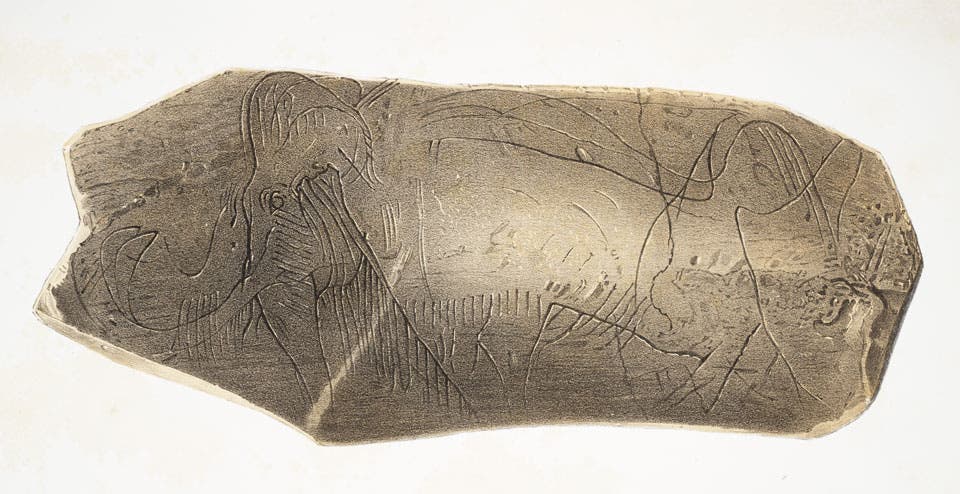Kent’s Hole, 1859
MacEnery, John (1796-1841). Cavern Researches: Or, Discoveries of Organic Remains, and of British and Roman Reliques, in the Caves of Kent’s Hole, Anstis Cove, Chudleigh, Berry Head. London: Simpkin, Marshall 1859.
MacEnery was a Roman Catholic chaplain at an abbey in Tor Bay, in southwestern England, an area surrounded by caves. As early as 1825, MacEnery excavated at Kent’s Cavern, on the north edge of the Bay, where he found extinct animal remains along with stone tools. He thought they were contemporary, but he was convinced by William Buckland that the human artifacts musts have been later additions to the cave, and MacEnerey did not publish his conclusions or the results of his excavations. They were published only after his death, in 1859, the very year that human antiquity was first established. The plates displayed show some of the tools unearthed, and the skull of a fossil wolf. For a map of Tor Bay, see the wall panel, “Brixham Cave.”

